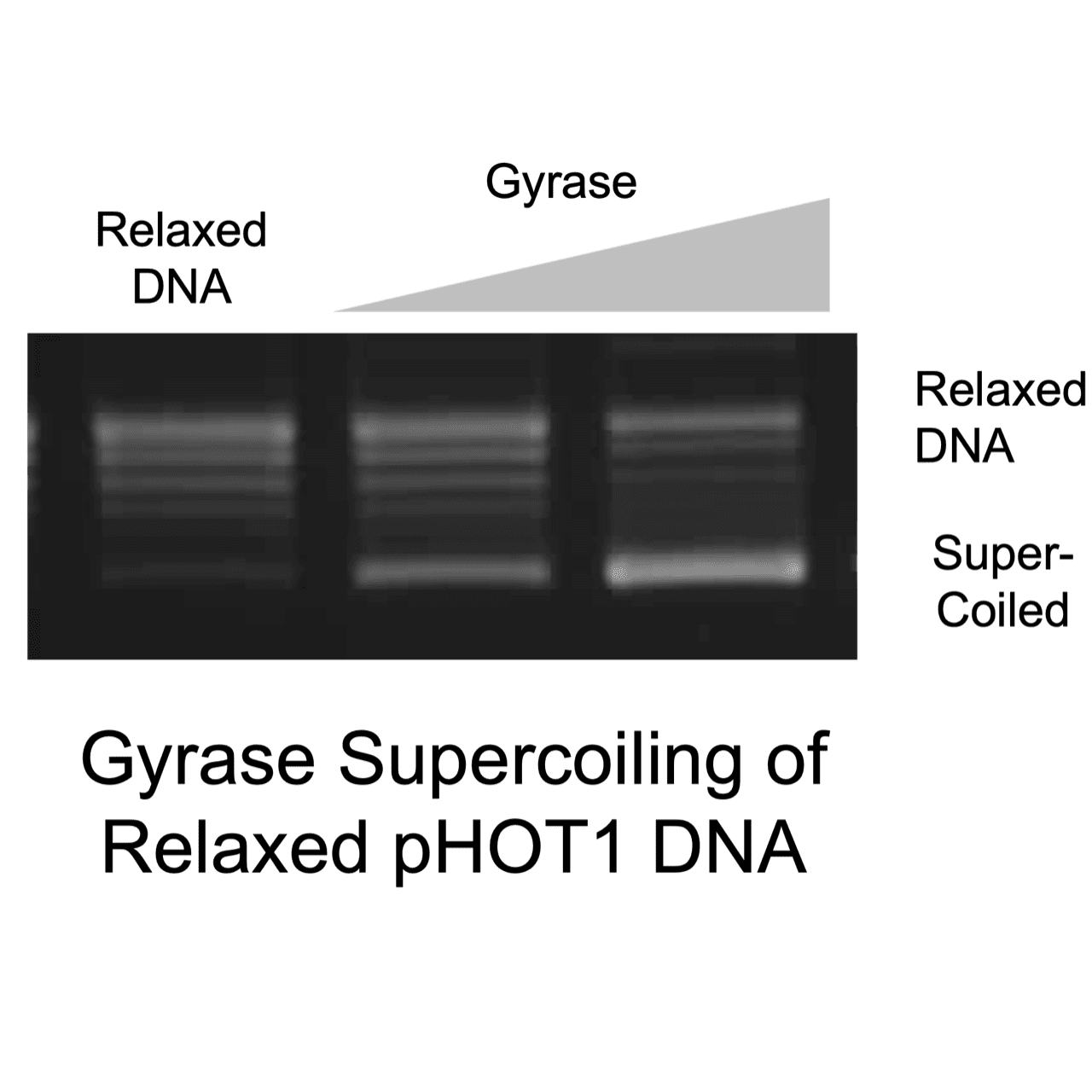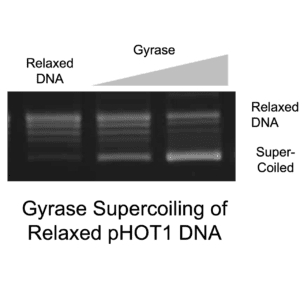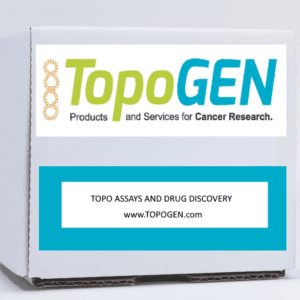The E. coli DNA Gyrase and Relaxed DNA Assay Kit is designed to provide the investigator quick and specific assays for DNA Gyrase. The assay will facilitate the purification and characterization of gyrase by providing controlled reagents that we certify to work. It is also appropriate for the researcher who is interested in large scale screening for novel anti-gyrase active agents. We matched the amount of DNA gyrase enzyme with the amount of Relaxed pHOT-1 DNA to get you going and keep you going on the hunt for new actives.
E. coli DNA Gyrase and Relaxed DNA Assay Kit
Contains bacterial (E. coli) DNA Gyrase purified to homogeneity based on SDS-Page.
Gyrase and Relaxed DNA Kit (100 Reaction size displayed)
-High purity E. coli DNA gyrase enzyme (100 units)
-Relaxed pHOT-1 DNA (50 μg)
-Supercoiled pHOT-1 DNA Marker (25 μl)
-Assay buffer (0.6 ml)
-Dilution buffer for enzyme (0.6 ml)
-Stop Buffer/Gel Loading Dye (0.6 ml)
–Detailed instruction manual
NOTE: Do not confuse this kit with the DNA Gyrase Assay kit which is designed for researchers who wish to assay for gyrase activity in extracts prepared by the investigator. The DNA Gyrase Assay Kit does not include enzyme.
This kit is shipped on dry ice and must be stored at -70°C for long term or -20°C for shorter term. Note that ATP containing buffers can and will deactivate with repetitive freeze thawing cycles. Given the excellent stability and purity of our gyrase, we recommend that you first check buffer deterioration before assuming loss of enzyme activity.
E-coli-DNA-Gyrase-Relaxed-DNA-Assay-Kit-Protocol
Reviews and Citations
- Phillips JW, Goetz MA, Smith SK, Zink DL, Polishook J, Onishi R, Salowe S, Wiltsie J, Allocco J, Sigmund J, Dorso K, Lee S, Skwish S, de la Cruz M, Martin J, Vicente F, Genilloud O, Lu J, Painter RE, Young K, Overbye K, Donald RGK, Singh SB: Discovery of Kibdelomycin, A Potent New Class of Bacterial Type II Topoisomerase Inhibitor by Chemical-Genetic Profiling in Staphylococcus aureus. Cell Chemistry and Biology 2011, 18: 955-965. doi: 10.1016/j.chembiol.2011.06.011.



